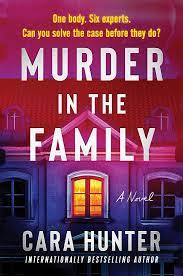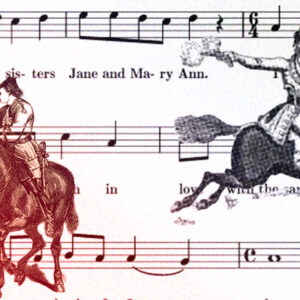The first crime novels I ever read were by Agatha Christie. I was probably about thirteen at the time and I remember being blown away by how clever she was. The way she could hide her killers in plain sight, or contrive a plot as deviously intricate as Murder on the Orient Express, or manipulate reader expectations with so much aplomb in The Murder of Roger Ackroyd. But the book that has unquestionably had the greatest influence on the legion of crime writers who came afterwards is And Then There Were None.
That novel single-handedly created an entire narrative trope – the ‘closed circle crime’. A group of apparently random people gathered in some more or less artificial isolation – a train, an island, a ship, a country house – whereupon everything starts to go horribly wrong and they realise, with growing horror, that one among their number is a killer. It’s a delicious mise en scène, even after all these years – what crime writer could resist? Certainly not me.
But Murder in the Family didn’t start out that way. The first seed of my new book couldn’t have been more modern. I’m fascinated by true crime in all its forms, from podcasts to books to documentaries, and when I decided to write my first standalone crime novel I wanted to bring everything I find compelling about that genre to the new book. I just needed a good idea to do it with. But as any writer will know, that’s the tricky part. But then it came to me: why not combine this very new way of presenting a crime story with one of the most traditional?
So that’s what I did. Murder in the Family is structured as a true-crime TV show in which a group of experts are brought together to re-examine an infamous twenty-year-old cold case. But the Christiesque twist is there right from the start: even before the show starts filming we know – even if the participants don’t – that it was one of them who committed the crime…
So for this post I’m going to look at nine examples of other writers reworking that famous And Then There Were None scenario, from Christie herself, via a 19th-century forerunner, to some modern highly successful examples. And we will start with one of the Queen of Crime’s other versions of the same scenario….
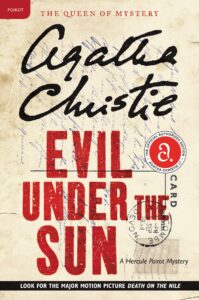
Evil Under the Sun, Agatha Christie
Published in 1941, two years after And Then There Were None, Christie reprises her island setting for this one, with Hercule Poirot joining an eclectic group of guests at a fashionable hotel on an island off the Devon coast. It’s a classic collection of Christie types – the ageing actress, the embittered stepdaughter, a clergyman, a retired Major, a bumptious American tourist, a robust spinster, along with assorted other soon-to-be suspects, all of whom will, of course, turn out to have a healthy motive. I’ve been lucky enough to stay at Burgh Island, the real-life hotel which inspired the setting for Evil Under The Sun, and you can absolutely see why – a gorgeous Art Deco building that once hosted celebrities like Noel Coward, the aviator Amy Johnson, Winston Churchill and Wallis Simpson, and most enticing of all for a crime queen, the whole island is cut off completely from the mainland twice a day (they have a wonderful water tractor which takes you over when the tide is in). I’m also a great fan of the 1982 Peter Ustinov movie – the climactic moment when Jane Birkin’s character descends the stairs at the end like an ugly ducking turned into a glorious mannequin of a swan is still a genuine gasp moment.

The Moonstone, Wilkie Collins
Often cited as the first detective novel in English literature (I’d go for Bleak House but that’s another story), Wilkie Collins’ 1868 classic is astonishingly modern in feel. With each chapter told by a different narrator, we gradually discover what really happened the night of Rachel Verinder’s 18th-birthday party, when the Moonstone diamond left to her by her uncle Colonel John Herncastle disappears. Suspicion initially falls on a troupe of Indian jugglers who may have been trying to retrieve the diamond, which was stolen by Herncastle when he was serving in India. But other strange things happen too: a maidservant drowns herself for no apparent reason, and Rachel herself begins to behave oddly, especially in relation to her cousin Frankin Blake, who had previously been a preferred suitor. Despite the best efforts of Sergeant Cuff, neither the diamond nor the thief can be found, and it will be a year before the fiendish truth is revealed.

Devices and Desires, PD James
Many consider PD James to be Christie’s natural successor, and she used the ‘closed circle’ concept a number of times to great effect, setting novels not just on an island but in a nursing home, a theological college and a forensic science lab. But my personal favourite is Devices and Desires, where the isolation takes the form of a nuclear power station on the windswept Norfolk coast. When the unpleasant administrator of the power station is found dead, it seems everyone has a good reason to want her gone, and James skilfully weaves an atmosphere of paranoia as terrorists strike the power station’s systems, threatening far more than just the immediate community. It was one of the James novels to be adapted for TV with Roy Marsden in the central role, and he’s always been my perfect version of the character, just as Joan Hickson is my forever Marple.

The Suspicions of Mr Whicher, Kate Summerscale
True crime this time, with Summerscale’s ground-breaking recreation of a fascinating Victorian murder. Three-year-old Saville Kent was found dead in the grounds of the family’s country home, Road Hill House, in the summer of 1860, and the circumstances were so gruesome a detective was sent from Scotland Yard to find the killer. No-one wanted to believe someone in the household could have done something so despicable, but even though Whicher was convinced that one of them was indeed the perpetrator, he was never able to prove it. It was only years later that an unexpected confession revealed just how toxic this closed family circle really was.
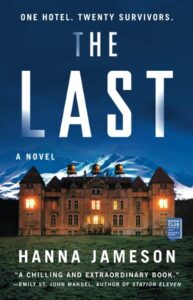
The Last, Hanna Jameson
A post-apocalyptic twist in this one. Jon Keller, an American historian, finds himself holed up with twenty other people in a huge old Swiss hotel, miles from anywhere, at the very moment nuclear war breaks out. Let’s face it, how much more isolated can you get? And if global annihilation weren’t enough, a young girl’s body is then discovered in one of the water tanks. Jon becomes obsessed with finding out what happened, but for the reader the interest lies more in how he processes the wider situation he finds himself in, rather than the details of the who- and why-dunnit.
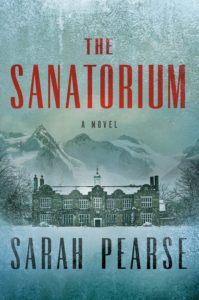
The Sanatorium, Sarah Pearse
Another secluded hotel in the Swiss Alps, another body found in water. This time the hotel is on the site of an old tuberculosis hospital (what could possibly go wrong, eh?). The action follows young British police officer Elin Warner, who comes to the hotel to celebrate her brother’s engagement while on time-out from her job after a traumatic case nearly had fatal consequences. But then an avalanche descends, the body count starts to rise, and Warner has to step up, ready or not. Like the hotel design, there are some ultra-modern elements here but it’s also a nice homage to its Christie roots – by Jove, there’s even a secret tunnel!
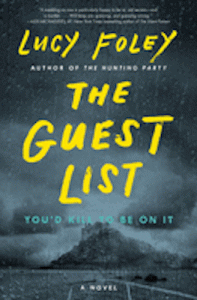
The Guest List, Lucy Foley
This is the second of Lucy Foley’s Christie-style thrillers (The Hunting Party was her first), and takes place at a celebrity wedding on an exclusive island of the Irish coast. But as the weather ramps up, the tensions do too, and it becomes clear that everyone has secrets and many of those secrets overlap in unexpected and potentially dangerous ways. And then all the lights go out and when the power comes back on again, surprise, surprise, someone is dead…

In A Dark, Dark Wood, Ruth Ware
One thing recent crime fiction has surely taught us is never accept an invitation to either a school reunion or a pre-wedding party in a remote location, however tempting it sounds. It just never ends well. The characters in In a Dark, Dark Wood clearly haven’t had the memo, and what sounds from the outset like a tricky bachelorette weekend rapidly descends into chaos. Add to the mix injury-induced amnesia, secrets, lies and unresolved rivalries, all put together by a narrator who isn’t just unreliable (see above under ‘amnesia’) but actually admits she’s “a professional liar” (she’s a crime writer, say no more). It’s a sleek thriller, but more than that, it’s an acute analysis of toxic femininity.
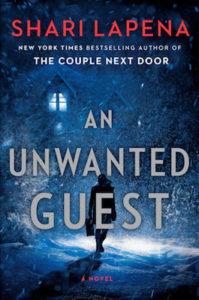
An Unwanted Guest, Shari Lapena
Shari Lapena is one of my favourite writers, and this is a nicely knowing nod to her august predecessor. Having lured her characters to a Christiesque location (a secluded hotel in the Catskills) she ruthlessly dispatches them to the equivalent of Christie’s own era by stripping them of all modern communications technology: a sudden snowstorm brings down phone lines and crashes both the internet and wifi. And if that weren’t enough to have the guests suspecting they’re in the midst of a Golden Age whodunnit, by dawn the next morning there’s a dead body too. And then another …. The Poirot-worthy cast become enjoyably suspicious and vicious by turns, and it is, as always with Lapena, beautifully written. As one of the characters says, browsing the hotel library, “I love a good murder mystery.”
*


